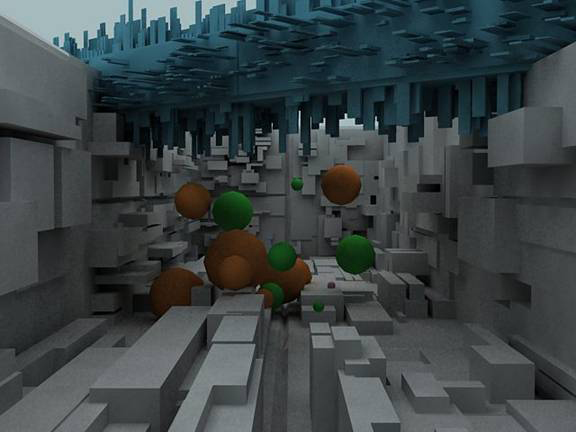Note: The following exercise is not directed to those new to the software.
Have you ever wondered why your GI renderings start out so dark? Well, in fact they are not so dark. The problem lies with the display device (the CRT or LCD) and that the software is not making adjustments for the gamma that the displays put on our images. That gamma is specifically called »sRGB. Technical information about sRGB can be found at that site.
On most displays (i.e., those with a standard gamma of 2.5), one can observe that the linear-intensity scale has a large jump in perceived brightness between the intensity values 0.0 and 0.1, while the steps at the higher end of the scale are hardly perceptible. The linearly-encoded scale, that has a nonlinearly-increasing intensity, will show much more even steps in perceived brightness.
Hence we would use the Gamma correction method. changing gamma influences the midtones of your image. A gamma >1 makes the midtones darker, a gammapreferences> gamma tab
Check Enable Gamma Correction
Change the gamma value to 2.2 and input gamma also to 2.2. (By default it is 1).
Mental ray and scanline render users are now on linear workflow. And they can render.
The further process is only for vray renderers.
Go to vray frame buffer and activate it.
Also go to color mapping option. Choose linear mapping. And uncheck clamp output and affect background.
Render your scene.
Now is the fun part.
 Click on show corrections control at the bottom of the frame buffer. It opens up the control
Click on show corrections control at the bottom of the frame buffer. It opens up the control
Make it a convex curve with the help of the bezier handles.
Then click on reset tangents by right clicking on the bezier handle.
That’s about it! See the difference!!
So most importantly, you get better light and corrected render image, in lesser time, instead of having the pain of adding more lights to brighten up the render
